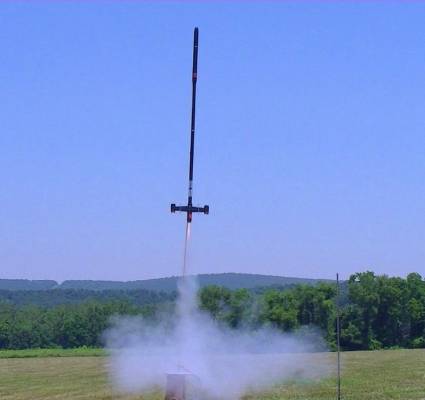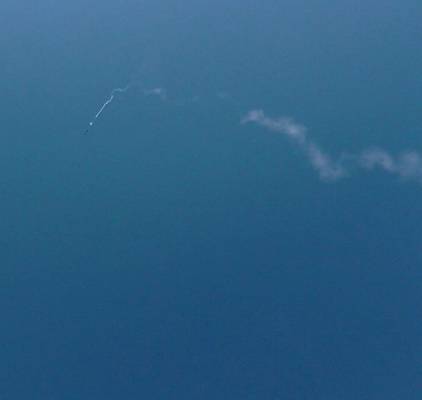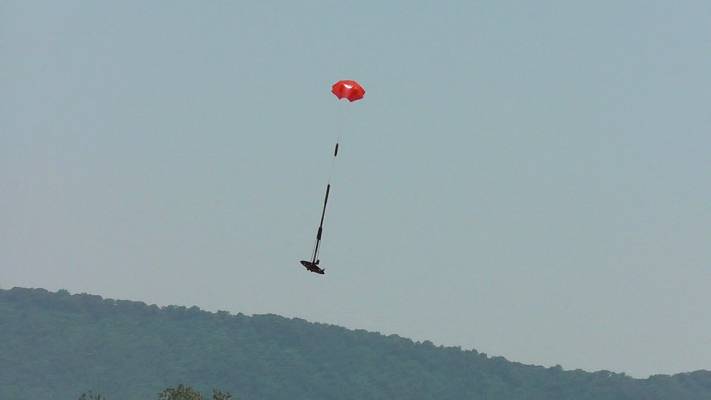The Andromeda: This is the original Estes 1977 kit. It was started in 1977 but not finished until 2011! I have added an Iris altimeter payload bay when I completed it. During initial string stability tests, the rocket buckled and folded in half! To repair, about 2 inches were cut from body tube, so even with the 3 inches of altimeter bay; this rocket is only 1.3 inches longer than the standard model. The two sections are now joined by a coupler; which makes for easier transporting by separating the two halves. To prevent losing the lower half if it ever separates during recovery, I attached a small Kevlar cord between the two halves. It needed about 19grams of nose-weight to pass string-test, but flies straight up under moderate winds. This model got a lot of oohs and ahhs at the launch, as nobody else in the local club has one. To me, gloss black seems to look nicer than the recommended flat black. To that I added a small amount of silver trim, around the engine rings, the rectangles on the engine pods, the antennas, and some rings around the body tube ends. This model takes off fairly slow and majestically. With its large fins, I wouldn't want to fly this in stronger winds, as the weather-cocking could produce a near lawn dart, and its length would almost guarantee a folded body tube and fractured fins. This rocket has flown higher than the US Capitol building in Washington DC, and the Flatiron Building in NY.
| Flight Date: | 2012-06-10 |
| Rocket Name: | Andromeda |
| Kit Name: | Estes - Andromeda {Kit} (1273) [1975-1982] |
| Flyer's Name: | Rich DeAngelis |
| Motors: | C6-3 |
| Launch Site: | Halifax, PA |
| Actual Altitude: | 274 Feet |
This model likes light winds for flight, so this was a perfect day. This was to be this rocket’s second data-gathering test flight. After ignition acceleration peaked at 6.6 Gs, about 1-1/2 Gs more than the previous flight. I like to think it was because the new launch lugs were better aligned than the original ones which had some resistance on the launch rod. The 1.8 second burn provided an average acceleration of 1.9 Gs, also a good number. This flight reached a maximum speed of 74 mph, 12 mph better than the previous flight.
I’ve had a lot of short delays on C6 motors and this was also short at 2.7 seconds. Ejection occurred at 268 feet while still coasting up. After 1/10 seconds and six more feet it reached apogee of 274 feet. A good parachute opened up to let it sink at 7 mph to a soft grass landing about 100 feet away from the launch area. This was a good and successful flight.
| Stage | Motor(s) |
|---|---|
| 1 | Estes C6-3 |
Sponsored Ads
 |
 |














